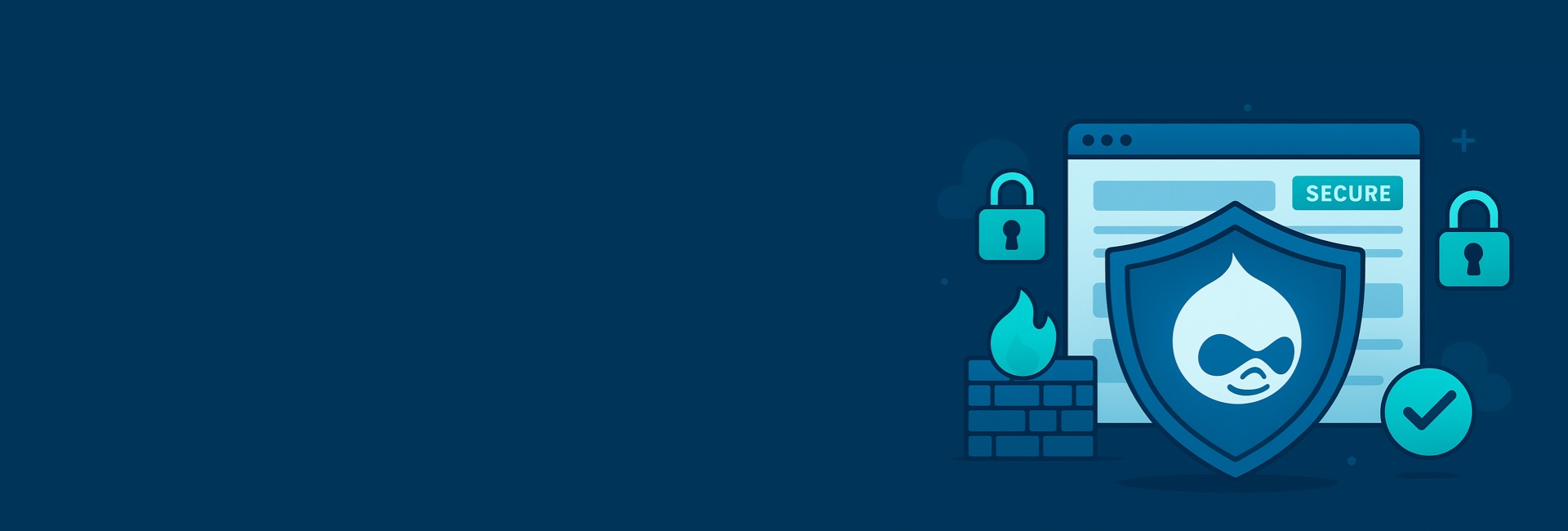
Drupal Security Checklist: Protect Your Website with Proven Best Practices
Running a website on Drupal means you already have one of the most secure and powerful CMS platforms in the world. From enterprises to government portals, Drupal powers mission-critical websites because of its robust security features and active developer community. However, even the most secure CMS requires ongoing monitoring, updates, and best practices to prevent vulnerabilities.
As a Drupal development company, we know that protecting client websites is not just about installing modules—it’s about implementing a proactive security strategy. That’s why we’ve put together this comprehensive Drupal security checklist to help businesses, NGOs, and enterprises keep their Drupal websites safe, compliant, and high-performing.
Why Security Matters for Your Drupal Website
A single breach can result in:
- Loss of sensitive customer or business data
- Downtime and revenue loss
- Damaged reputation and loss of trust
- Costly penalties due to non-compliance with GDPR, HIPAA, or PCI DSS
When it comes to security, prevention is always better (and cheaper) than cure.
✅ The Ultimate Drupal Security Checklist
1. Keep Drupal Core and Contributed Modules Updated
Outdated software is the #1 reason for security breaches. Drupal regularly releases security patches to fix vulnerabilities.
- Always run the latest Drupal core version.
- Update contributed modules and themes as soon as new releases are available.
- Enable Drupal’s update status module to receive notifications about new updates.
Pro Tip: Use a staging environment to test updates before deploying to production.
2. Use Trusted and Maintained Modules
Not all modules are equally safe. Some are abandoned or poorly maintained, leaving your website exposed.
- Only download modules from Drupal.org.
- Avoid custom or third-party modules that are not actively supported.
- Regularly audit installed modules and uninstall unused ones.
3. Enforce Strong User Roles and Permissions
Improperly configured roles are one of the most overlooked vulnerabilities.
- Follow the principle of least privilege—users should only have permissions they truly need.
- Never assign “Administer Site Configuration” to non-admin users.
- Create separate roles for content editors, moderators, and site admins.
Example: Authors should only be able to create and edit their own content, not change site-wide settings.
4. Secure Login and Authentication
Weak passwords and poor authentication make it easy for hackers to gain access.
- Enforce strong password policies.
- Enable two-factor authentication (2FA) using modules like TFA or Google Authenticator.
- Limit login attempts with the Flood Control or Login Security module.
- Use SSL/TLS (HTTPS) to encrypt login sessions.
5. Regularly Back Up Your Drupal Website
Even with the best security, accidents happen.
- Automate daily backups of both database and files.
- Store backups in secure offsite locations (cloud or external server).
- Test backup restoration regularly to ensure reliability.
6. Secure Hosting Environment
Your Drupal site is only as safe as the server it runs on.
- Choose a Drupal-optimized hosting provider with strong security policies.
- Keep server software (PHP, MySQL, Apache/Nginx) updated.
- Use firewalls and intrusion detection systems.
- Disable unnecessary ports and services.
7. Enable HTTPS and SSL Certificates
Unencrypted websites are highly vulnerable.
- Install an SSL certificate (Let’s Encrypt or commercial).
- Redirect all traffic to HTTPS.
- Use the Secure Pages module for sensitive paths (e.g., login, checkout).
8. Monitor Security Advisories
The Drupal Security Team publishes advisories for vulnerabilities.
- Subscribe to the Drupal Security Advisory mailing list.
- Follow the official Drupal Security Team on Twitter .
- Apply patches immediately when high-risk vulnerabilities are announced.
9. Use Drupal Security Modules
Drupal has powerful modules to strengthen security:
- Security Kit: Prevents XSS, clickjacking, and CSRF attacks.
- Paranoia Module: Removes unnecessary PHP execution risks.
- Password Policy: Enforces strong password requirements.
- Captcha / reCaptcha: Blocks automated spam bots.
- Content Access: Provides granular access controls.
10. Harden File Permissions
Misconfigured file permissions allow attackers to upload malicious files.
- Set
sites/default/filesdirectory to 755 (not writable by the public). - Disable PHP execution in upload directories.
- Restrict sensitive configuration files like
settings.phpto read-only.
11. Monitor and Audit Your Drupal Site
Ongoing monitoring is essential for early detection.
- Use the Drupal Watchdog module for detailed logs.
- Implement a Web Application Firewall (WAF).
- Scan for malware and vulnerabilities regularly with tools like SiteAudit.
- Monitor uptime and performance metrics to detect unusual activity.
12. Implement Content Security Policies (CSP)
CSP adds an extra layer of protection against cross-site scripting (XSS).
- Configure headers to restrict which domains can load scripts, images, or styles.
- Use the Security Kit module to implement CSP easily.
13. Secure API and Third-Party Integrations
APIs and external services are common attack vectors.
- Use OAuth or token-based authentication.
- Limit API access to trusted IPs.
- Remove unused integrations.
14. Train Your Team
Even the best technical safeguards fail if users make mistakes.
- Train content editors and admins on security best practices.
- Run periodic security awareness sessions.
- Encourage reporting of suspicious activities.
Bonus: Drupal Agency Security Checklist
As a Drupal web agency, here’s the checklist we use for every client project:
- ✅ Core and modules always updated
- ✅ Security modules enabled
- ✅ Regular backups tested
- ✅ HTTPS enforced
- ✅ Permissions reviewed quarterly
- ✅ Hosting environment secured
- ✅ 24/7 monitoring & malware scanning
By following this process, we ensure Drupal sites remain safe, stable, and compliant.
Conclusion: Secure Your Drupal Website with Confidence
A Drupal website is only as strong as the strategy behind it. Following this Drupal security checklist will help protect your business against common threats and keep your website running smoothly.
However, maintaining security is not a one-time task—it’s an ongoing process. Partnering with a specialized Drupal support and maintenance agency ensures that your website always stays updated, monitored, and protected.
👉 If you’re looking for expert Drupal security services, regular maintenance, or a dedicated Drupal support partner, our agency can help safeguard your digital presence.